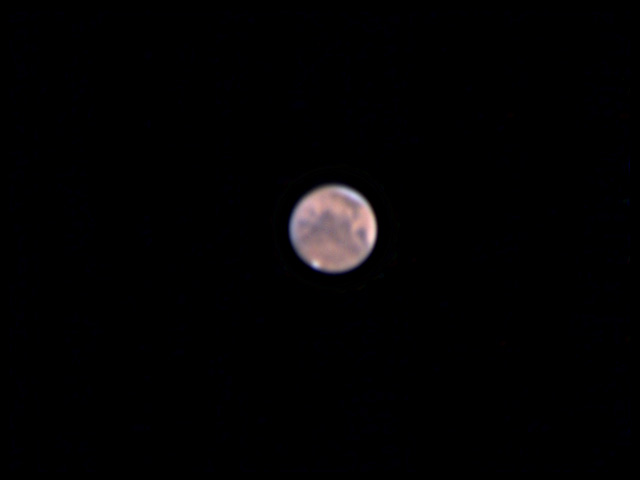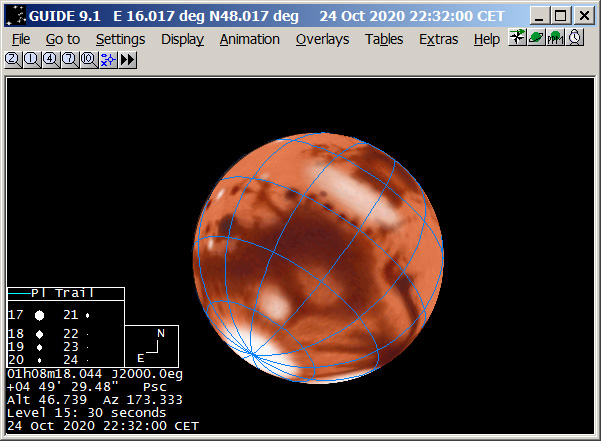In October 2020 Mars had one of its biannual approaches to earth. But this opposition, when planet earth overtakes the cosmic neighbour on the inside lane, was something special.
Mars approaches may happen at various seasons, which means that the altitude is either very low in summer or high in winter. But in addition, the excentricity of the Mars orbit around the sun causes the apparent size to vary considerably between tiny 14" in winter and spring and up to 25" in summer and autumn. So for observers in the northern hemisphere there is just a short window in the year when Mars is visible both large enough for amateur telescopes and high enough to bypass the worst wobbles of the atmosphere. The October 2020 opposition was one of these optimal compromises between height and size. The next Mars opposition falling in this optimal season for the observers will take place in September 2035. So there is no time to lose...
Weather was really lousy in October, and for quite a few weeks there were no reasonable conditions encouraging me to even shuffle my gear into the car. But finally I took the risk of a very uncertain weather forecast at an early evening Saturday in late October to go out to Bockflie . I was lucky that the clouds where changing enough to take a few test pictures for a different astrophoto project you will be hearing about soon. Then after the sky cleared up completely and the air conditions settled I made an attempt for Mars with my planetary video camera attached to my 8" scope. And the material turned out to be good enough to capture plenty of details that are also expected to show up on sufficiently large equipment. I took a screenshot of the star atlas software Guide to compare what I was able to resolve against the features provided by the libraries. The bright white spot at the lower left edge is the carbon dioxide ice cap at the south pole of Mars slowly evaporating in the southern Mars summer. The blueish rim at the opposite end may be an indication for precipitated frost in the winter hemisphere.
Needless to say there are no "canals" to be observed just like the ones so many observers in the first half of the 20th century were looking for. In fact, Giovanni Schiaparelli's discoveries from 1877 were elongated features he described as "Canali" which in Italian means "gouge" or "canyon". He himself had little doubt about the geological nature of these features. But when his discoveries were misleadingly translated into other languages the fires of imagination were unable to be extinguished...

